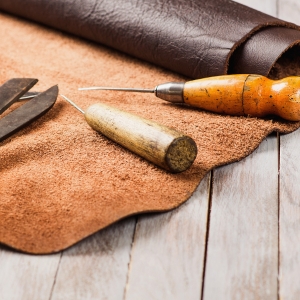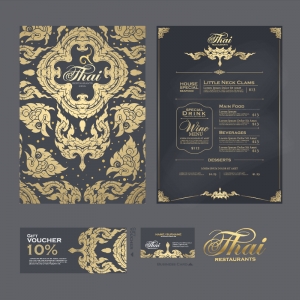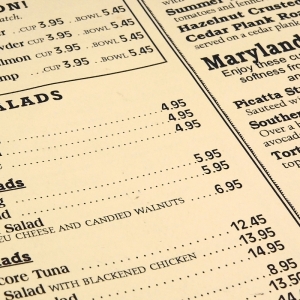100's of Products

Full Personalisation

Hand Crafted

Worldwide

How to Order Your Bespoke Menu Covers
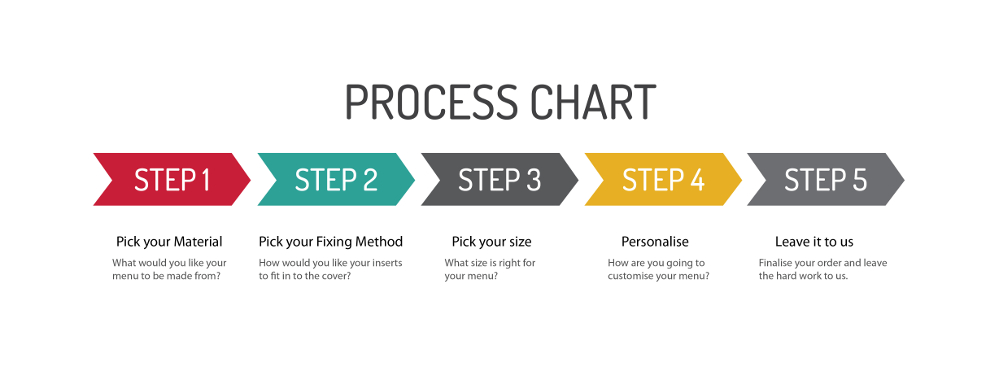
At Buy Menu Covers, we have plenty of new clients who come to us needing help in choosing the right menu for their establishment. Fortunately, our expert team is on hand to help you make the optimal choices based on your needs. However, appreciating that you might need a bit more time and information, we have written this guide to help you have a better understanding before speaking to a member of our team.
Material
By now, you've probably had a good look around our website and seen that we differentiate our products by the materials that they are made from. Starting with this allows you to understand how the basis of your menu will look and feel.
The two things that you should consider when choosing a material is its durability and how the look of it will fit in to your venue. If your venue tends to see a lot of spillages, or you really want a menu that will last a long time then consider the strength and wipeability of the material. Strong and wipeable materials that we always recommend are real wood, buckram (in the fabric range), and any of the leathers. These materials tend to be really popular and therefore are generally available in a variety of colours so you can get a really nice look.
If the style of your menu if the main concern then consider the materials that are used within your interior design and try and match them. With the large range of materials we offer, there will more than likely be many crossovers for you to choose from. To draw even more attention to your menu why not try a contrasting colour or material?
Fixing
The next thing you should consider is the fixing method that you will use. For more information on the fixings that we offer, head over to our fixings page. This should give you a good idea of each and how they work.
You should consider how often you will be changing you menu inserts as some fixing methods may take longer than others to change. The quickest methods to change your inserts include the grip fix, magnet fix, internal cord and anything with PVC pockets on the inside.
PVC pockets can offer extra protection to your pages and also make it very easy to change menus. Although the initial cost is slightly more, it can save you money on your printed inserts in the long run. PVC pockets can be used in conjunction with screw fixes and cord & eyelets.
Sizes
Choosing a size is normally the most straightforward step for clients. If you are printing your inserts yourself, then consider what size pages your printer can print - this will allow you to print easily without needing to cuts each page to size.
If you are getting us, or another printer to do your inserts, then you will have more flexibility. As a general guide, most people tend to go for a 1/2 A4 menu for a drinks or desserts list and 2/3 A4 or A4 for a full menu.
If you want something a bit different without the additional printing costs, then the internal cord fixing holds folded pages, which means that you can have a 1/2 A4 menu cover which will take folded A4 paper (as long as you set up the margins on your print correctly).
Personalisation
Now for the fun part! Personalisation comes in many different forms and looking at our personalisation page will give you a better understanding of each technique. This comes down to personal preference and what type of material you have chosen for your covering material. You may also want to consider your interior decorations to get inspiration and also work your menu seamlessly in to its surroundings.
These finishing touches really make a menu and it is your chance to shine. You can go as wild as you like and chances are, we will be able to do it. At this stage, it would be wise to come up with some ideas and speak to our design team to make it a reality!
Restaurant Menu Design Ideas
Menu design is really up to personal preference, but your guests experience should be kept in mind throughout the design process. This will ensure that the goal of boosting sales and customer loyalty can be driven by the menu's easy navigation.
Incorporate suggestions
Incorporating suggestions such as wine and beer pairings for your meals may entice your guests to try something different and perhaps enjoy their meal even more than usual. It may also allow you to offer some deals based on the pairings or drive sales of products with a higher margin. Adding this thoughtful bit of information is a nice touch that can only add to your menu.
Running your drinks lists alongside your food menu may allow you to work the two together in an innovative way that is very easy to navigate. This might allow you to show the full list of drinks whilst also recommending pairings without doubling up.
Think about how your menu cover works physically. A clever way of combining your recommendations and food together would be to stagger them on a concertina menu cover so that when it is half folded you can see the drinks from one angle and the food from the other side and when flat, they are both together.
Make imagery the star of the show
With online shopping, people are more and more accustomed to making purchasing decisions based upon a picture. So why not show a picture of each dish with a brief description next to it? If you take pride in the look of your food (and know a really good food photographer), then this might be an idea for you.
If you are running something more like a tapas or fast food restaurant, you may be able to incorporate symbols rather than actual photographs. Symbols make it really easy to understand and should make your menu even more legible. This might sound peculiar, but a symbol of a burger or a taco should be simple to create and would make it obvious what each item was before even reading the text.
Split it up
If you have a particularly long menu then you might consider splitting it up so that your customer can find what they want with ease. Try to refrain from copying everyone else for the sake of it. If there is a logical way to split everything up then do it that way. Categorise meals by the type of meat or vegetables that are in them, how they are cooked, the cuisine type, or anything else that you might think of. All are logical methods that make it really easy for your customer to hone in on what they fancy.
Incorporate your menu cover in to this by using the folds on a concertina style menu or a PVC menu cover to separate the categories.
How to Price Your Menu
Pricing is the most important consideration for ensuring that your business is successful. it is the most important factor for your finances and marketing strategy.
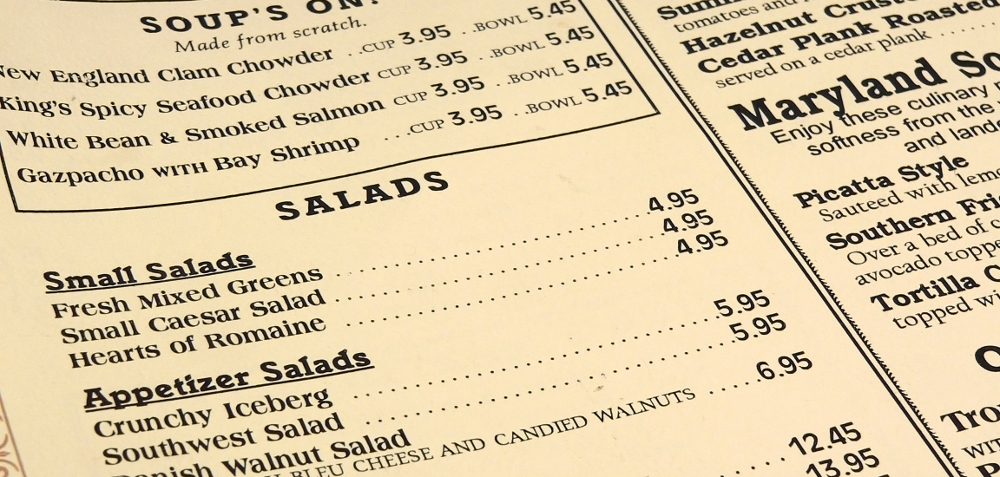
Competitor research
Looking at how much your competitors charge is one of the most powerful ways of understanding how your restaurant might be seen in the eyes of your customers. Get an idea of the pricing of local competitors, similar restaurants and maybe even ask your suppliers who they supply so you can see what type of mark up other similar businesses are putting on food.
You will want to sit your pricing somewhere around these points to be competitive. If you are a more luxurious option, then you may be able to afford to be a bit more expensive than local competitors, or maybe you are looking to offer value for money and place yourself slightly cheaper than local competitors.
Food costs
Your food costs are an obvious factor in how you price your meals. Figuring out how much a meal costs you may be a tedious task but it is very necessary.
Consider all of the food waste and see if you can use it elsewhere to mitigate the price of the meal. If you can bring the cost down in any way then it will be worth it in the long run. Why not try bartering with your supplier?
Most restaurants look to make a 65-70% gross profit on meals. So if you add this mark up to your meal cost, the sale price should come somewhere around where you envisaged yourself in comparison to your competitors. If it comes out more expensive then you may want to simplify your meal, speak to your supplier or even try something else.
Maybe it is simply a more expensive dish that you think your guests would pay the premium for. Why not try it on your specials board to see if it works before incorporating it in to your menu full time?
If it comes out cheaper than you envisaged then you have the ability to add something else to your meal, increase your margin, or simply offer the meal as a cheaper option on your menu.
Indirect Costs
Indirect costs are the costs of everything else (also known as your overheads). To fully understand what type of margin your restaurant needs to be working to this should be fully comprehended. Consider rent or mortgage payments, business rates, staff wages, utility bills, cleaning costs, maintenance, and any other costs that your personal business may have. To run a sustainable business your revenue needs to be able to pay for all of the costs with some profit on top.
If your costs seem to be stacking up, then it might be wise to see where you can save on some bills. Getting rid of anything that isn't necessary or keeping your eye out for a cheaper supplier of necessities is a great idea for any business to reduce costs and, consequentially, boost profits.
If this isn't possible, then consider increasing your margin. But, be mindful of your valued customers when deciding to take this option.
Get In Touch
Contact Us
Telephone
Midlands 01743 465 301
International +44 1743 465 301

